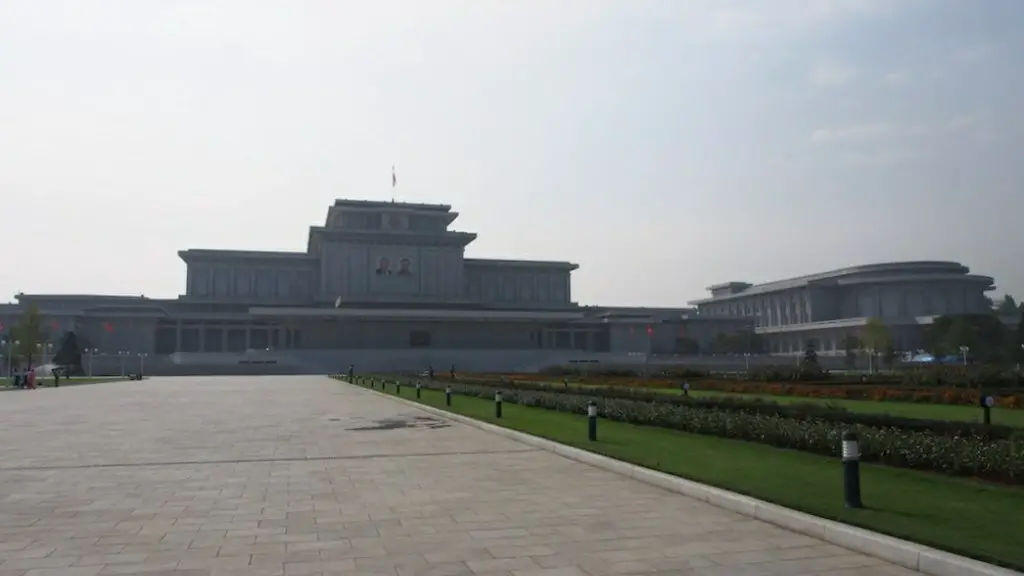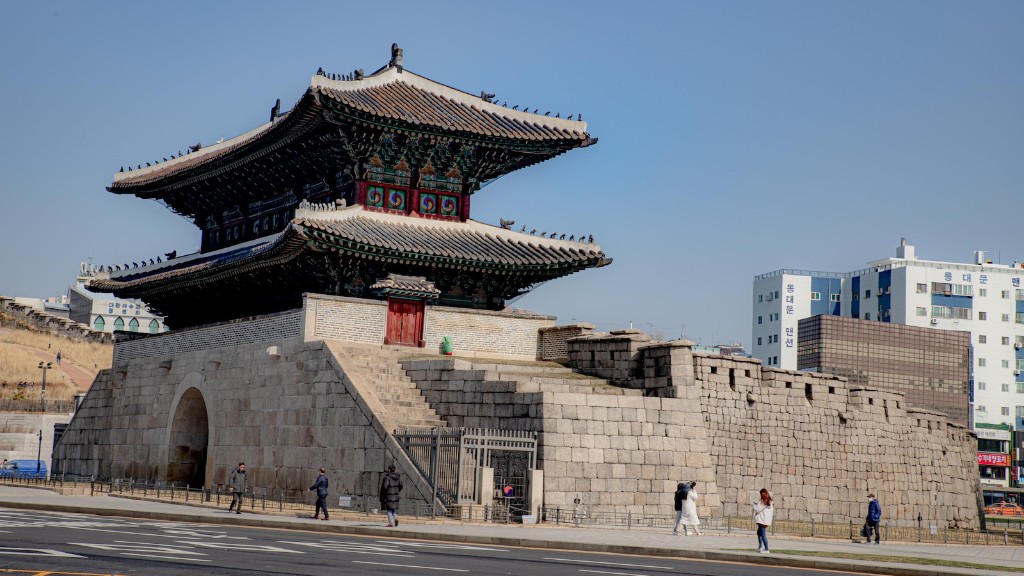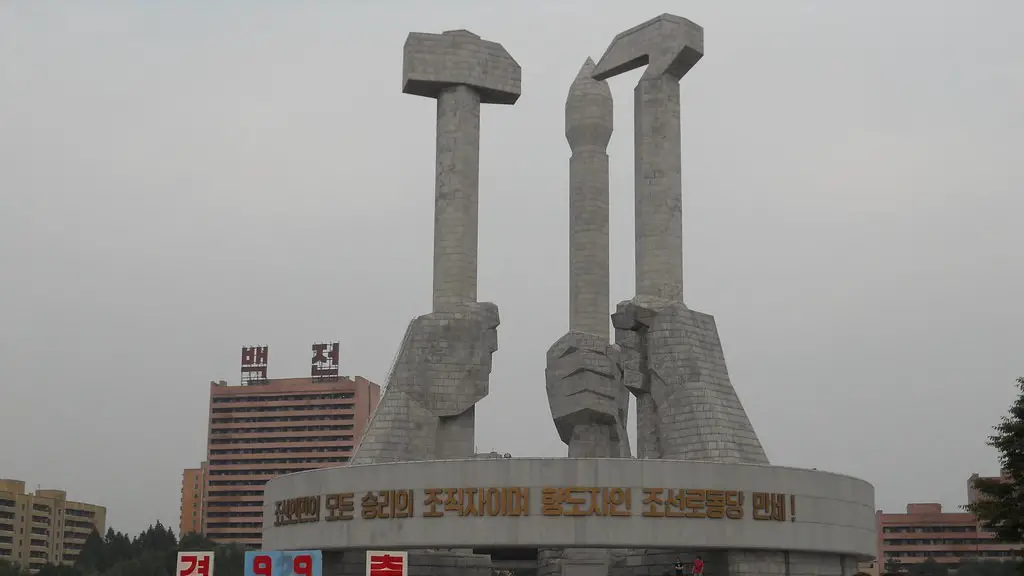Background Information
The threat of a war between North Korea and the United States has been prevalent for decades, heightened in recent years as North Korea has developed weapons of mass destruction and continues to increase its nuclear capabilities. In the present-day, North Korea is believed to have enough nuclear material to produce as many as sixty nuclear weapons, and is reportedly working to develop an intercontinental missile – a ominous development. With escalating rhetoric and military posturing on either side of the Korean demilitarized zone, the long-running crisis appears to have entered a precarious phase.
Major Events
Since the Korean War in 1950, when a United Nations force led by the United States fought against troops from North Korea and China, the two countries have remained only technically at peace, as a peace treaty was never officially signed. Strategic tensions between North Korea and the United States reached their highest point in 2017, when the US President, Donald Trump, threatened to launch “fire and fury” against the North Korean leadership. This was followed by military provocation from both sides, as Trump deployed an aircraft carrier and four other warships to Korean waters and the North Korean government fired multiple ballistic missiles over Japanese airspace.
Are The Surface Tensions Real?
Despite these ominous appearances, some analysts have suggested that the war of words between the United States and North Korea is little more than a calculated performance, as neither side has incentives to actually go to war. While President Trump’s actions have sometimes been reckless, no serious moves by any party to launch a military engagement have been made and North Korean leaders seem more intent on leveraging their nuclear threats for diplomatic gain than actual war.
Sanctions and Negotiations
In the wake of North Korea’s continued nuclear testing and international condemnation, the United Nations Security Council unanimously imposed a series of progressively harsher economic sanctions against North Korea. In spite of these punitive measures, North Korea has insisted on engaging in negotiations with the United States, and even held a summit between Trump and Kim Jong-Un in Singapore in June 2018. The summit was widely criticized as a photo-opportunity and yielded few tangible concessions, yet the two sides agreed to resume negotiations and the US president publicly stated that there was “no longer a Nuclear Threat from North Korea”.
International Opinion and Interest
Opinion on North Korea’s true intentions and the effectiveness of economic sanctions is divided. Some argue that the “maximum pressure” strategy of the United States has only encouraged North Korean belligerence and weakened the country’s incentives to genuinely negotiate. Others view North Korea’s direct confrontation of a great power as evidence of its vulnerability and a sign of hidden willingness to negotiate. For China, North Korea’s war-scarred neighbor, the North Korean nuclear program is both an opportunity and a risk; either a convenient buffer from American pressure or a nuclear disaster waiting to happen.
Opinion/Analysis of the Situation
The public declarations of President Trump and his pursuit of a “maximum pressure” approach for North Korea have done little to ameliorate the country’s nuclear ambitions. Similarly, the United Nations’ economic sanctions have obviously not worked, as increasing personal wealth is likely to be of little importance to a ruling regime unconnected with its people and unconcerned by the plight of its citizens. Beyond the bluster of the US President, economic sanctions and protracted diplomatic negotiations, a genuinely workable solution must rely on a greater engagement of the North Korean people and an understanding of their grave economic opportunities and human rights violations.
Potential Solutions
Engagement with the North Korean government is an important step towards diplomacy and peace. Despite mutual suspicion on either side of the Korean demilitarized zone, the two governments have shown willingness for negotiation, and potential exists for ongoing discussions beyond Singapore. In the short term, diplomatic negotiations should focus on addressing North Korea’s security concerns, particularly their aspirations for international recognition and attempts to secure contractual assurances from the US regarding their nuclear status.
Ultimately, however, peace on the Korean peninsula will only be based on a common understanding between the two nations and both sides must reach an agreement as to North Korea’s future denuclearization. Real progress in this direction can only be achieved if North Korea is no longer a pariah-state and is instead allowed to trade with and engage with the international community through treaties and diplomatic agreements.
Trump’s China Deal & Negotiation Failures
Negotiations between the US and North Korea have had numerous starts and stops, with the most recent round of talks ending abruptly in February 2019 after the US refused to lift economic sanctions. Notably, Donald Trump had secured a fragile peace with China by establishing a Comprehensive Agreement on Trade and Tariffs, yet his failure to secure relief for North Korea is evidence of the limited power of economic warfare against a regime like that of North Korea, as the North Korean leaders are not accountable to the welfare of their people and are therefore untroubled by limits to their resources and opportunities.
The Role of the United Nations
The United Nations has an obvious role in any effort to restrain North Korea’s nuclear ambitions, and has repeatedly issued warnings to the North Korean government and relevant cities, and passed economic sanctions targeting individuals and their families. While the UN’s economic punishments and diplomatic overtures have had some success at slowing the country’s nuclear weapons program, they have had little impact on restraining the leaders of the country. The UN Security Council must direct its energies towards a comprehensive agreement that fully engages North Korea and its people, instead of merely issuing further economic restrictions.
Human Rights Abuses
North Korea remains one of the world’s most repressive regimes and a major violator of civil rights, yet its abuses remain largely unseen by the outside world. Reports of human rights violations in North Korea range from forced labor and public executions to torture, arbitrary detention, and the use of gulags to punish perceived enemies of the state. Any real hope for peace in the Korean peninsula hinges on an obvious shift in the North Korean government’s approach to its own citizens, and only by engaging in dialogue can the international community hope to foster meaningful change in the country.
Conclusion
The threat of war between North Korea and the US is real, with both sides engaged in escalating rhetoric and posturing. Yet, due to a number of interrelated factors, the military confrontation appears unlikely – the US President’s reckless behavior, the North Korean leaders’ desires for international recognition, and the emotional vulnerabilities of the North Korean people. Clearly, peace between the two sides of the Korean demilitarized zone will require concessions on both sides and a fundamental shift in the current dynamic, which can only be achieved through both tough and flexible diplomacy from the United States and other involved parties.


